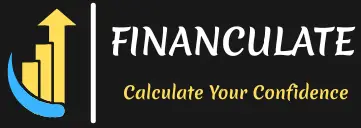Investing $1,000 might not sound like a fortune, but it’s more than enough to kickstart your journey to financial growth. You don’t have to be a Wall Street pro or have a high-paying job to begin investing. What matters most is your decision to take that first step and grow your money — wisely and intentionally. Whether you’re saving for the future, planning a vacation, or simply want your money to work harder for you, putting that $1,000 to use could be your smartest move yet.
If you’re unsure where to start, don’t worry — this guide walks you through seven powerful ways to invest $1,000 for maximum growth. These options are perfect for beginners and seasoned investors alike, offering both safety and potential for higher returns.
1. Invest in a Broad Market Index Fund
A great option for beginners is putting your money into an exchange-traded fund (ETF) that follows the entire stock market or a big index like the S&P 500. These allow you to own a piece of many companies at once, which spreads out your risk.
Why does this matter? Think of it like ordering a sampler platter at a restaurant instead of committing to one dish. If one company doesn’t perform well, others in your portfolio might balance it out. Plus, index funds come with low fees and are known to give solid returns over time — especially if you leave your money invested for several years.
Popular choices include:
- Vanguard S&P 500 ETF (VOO)
- Schwab U.S. Broad Market ETF (SCHB)
- iShares Core S&P Total U.S. Stock Market ETF (ITOT)
2. Start or Boost a Roth IRA
Looking long-term, especially for retirement? A Roth IRA is a fantastic way to use your $1,000. With a Roth IRA, you contribute post-tax dollars. That means your investments grow tax-free, and you won’t pay taxes when you withdraw them later (as long as rules are followed).
What makes this even better is the power of compound interest. The earlier you start, the more time your money has to grow.
You can open a Roth IRA through well-known brokerages like:
- Charles Schwab
- Fidelity
- Vanguard
3. Put Your Money in a High-Yield Savings Account
If you’re not quite ready to dive into stocks, a high-yield savings account is a solid and safe starting point. These accounts pay much better interest than regular savings accounts, giving you steady, low-risk growth.
Reasons to consider this option:
- FDIC-insured, so your money is safe up to $250,000
- Accessible at any time
- Online banks often offer higher rates
Check out current offerings from banks like Ally, Marcus by Goldman Sachs, or Discover Bank. This is also a good way to build an emergency fund — an essential part of healthy finances.
4. Diversify with Fractional Shares
Think owning a piece of Amazon or Tesla is out of reach? Not anymore. With fractional shares, you can buy a “slice” of a stock instead of the whole share. This lets you invest in big-name companies with just a few dollars.
It’s a great way to diversify your portfolio on a smaller budget. You can spread your $1,000 across several companies or sectors. This approach gives you flexibility and variety — and it’s pretty exciting to be part-owner of a company like Apple.
Brokerages like Robinhood, Fidelity, and Charles Schwab offer this feature.
5. Use a Robo-Advisor to Automate Your Investments
Not sure how to invest or don’t have time to stay updated on market trends? A robo-advisor might be your perfect match. These are digital platforms that build and manage your portfolio based on your preferences and risk level — all with little hands-on work from you.
It’s investing on autopilot. Most use algorithms to invest in diversified ETF portfolios and rebalance them regularly. Some even offer tax-loss harvesting, which can help reduce your taxable income.
Trusted names in the robo game include:
- Betterment
- Wealthfront
- SoFi Automated Investing
6. Invest in Yourself
Let’s not forget: You are your best investment.
Use that $1,000 to grow your skills or learn something new. Whether it’s enrolling in an online course, attending a conference, or picking up a certification, the return on education can be massive over time. Learning a new skill can boost your income, open up better job opportunities, or give you the tools to start a side hustle.
Online learning platforms like Udemy, LinkedIn Learning, and Coursera make it easy to get valuable training at affordable prices.
7. Dip Your Toes into Peer-to-Peer Lending or REITs
If you’re looking for something a bit different, consider peer-to-peer (P2P) lending or Real Estate Investment Trusts (REITs). These are alternative investment options that can offer solid returns, though they come with higher risk.
P2P lending:
You lend money to individuals or small businesses through websites like LendingClub or Prosper. In return, you earn interest — much like a bank would. Your returns will depend on how risky the borrower is.
REITs:
Want to invest in real estate without buying a house? REITs let you own shares in real estate portfolios, and you earn money through dividends. It’s a great way to add real estate exposure to your investments without a huge budget.
Platforms like Fundrise and RealtyMogul make it easy to start with just a few hundred dollars.
Final Thoughts: Make That $1,000 Work for You
The truth is, it’s not about how much money you start with — it’s about what you do with it. Even $1,000, used smartly, can grow into something much bigger over time. From stock index funds to investing in yourself, there’s no shortage of ways to make that first investment count.
So, what will you choose? Will you automate, educate, or diversify? No matter your path, the key is to start. Because the earlier you begin, the longer your money has to grow thanks to the magic of compound interest.
For more helpful finance insights, be sure to check out our article on how to build an emergency fund.
To dive deeper into the original resource for this topic, visit the Investopedia article here.

